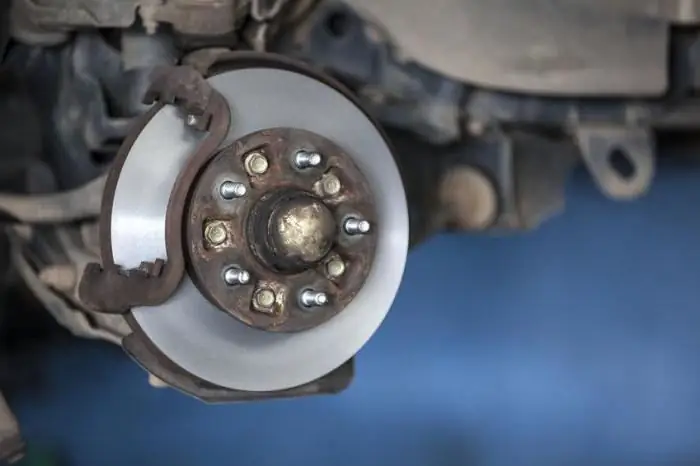2025 Author: Erin Ralphs | [email protected]. Last modified: 2025-01-22 21:14:11
Piston rings are rings with a small gap, not closed. They are found in grooves on the outer walls of pistons in all types of reciprocating engines (such as steam engines or internal combustion engines).
What are piston rings for?
1. For sealing the combustion chamber. Compression rings significantly increase compression. Stuck, broken, or worn rings may cause the engine to fail to start or lose power.
2. To improve heat transfer through the cylinder walls. The rings help to remove heat from the piston during the operation of the internal combustion engine, thereby preventing overheating.
3. To reduce engine oil consumption (in two-stroke diesel engines and in all four-stroke ICEs).
How are piston rings arranged?

The joint (aka lock) is located between the ends of the piston ring. When the piston is in the cylinder, the lock is slightly compressed - up to a few fractions of a millimeter. It happens oblique (for four-stroke internal combustion engines) and straight. The rings in the grooves are arranged in such a way that the angle between the joints is equal (2 rings - 180 degrees, 3 rings - 120 degrees). The result is a maze that reduces the breakthroughgases. Rings are oil scraper and compression. Oil scrapers protect the combustion chamber from oil entering it from the crankcase. They remove excess engine oil from the cylinder. The oil scraper rings are installed below the compression rings. They have slits. In two-stroke gasoline ICEs, oil scrapers are not used, since the engine oil burns with the fuel. Now either cast iron or composite steel rings with expanders in the form of springs are produced. Compounds are simpler and cheaper to manufacture, so they are much more common than cast ones.

Compression piston rings protect the engine crankcase from gas gusts from the combustion chamber. In the free state of the ring, the outer diameter is larger than the inner. For this reason, part of the product is cut out. The place of the cut is called the lock. Usually, no more than three such rings are installed on one piston, for the reason that the degree of piston sealing increases slightly, and friction losses increase. On two-stroke internal combustion engines, as a rule, two rings are installed. The cross section of most compression rings is rectangular. The edge has either a chamfer that tapers or a cylindrical profile. When the internal combustion engine is running, the rings are twisted to some extent (this provides clearance in the groove), which makes them easier to break in.

Manufacturing of piston ringsTechnologies and methods of manufacturing must provide the shape of the product, which in a free state would create the desired level of pressure in its workingcondition. The piston ring is usually made of high-strength gray cast iron, as it has good stable elasticity and strength, high wear resistance, and excellent anti-friction properties. Doping additives are also used (special porous chromium coating, molybdenum surfacing, plasma jet spraying, ceramic coating, diamond particles), which contribute to a significant increase in the thermal stability of products.
Recommended:
How to put rings on a piston: the technological process of installing and replacing rings

If the car's dynamic performance has deteriorated sharply, oil and fuel consumption has increased, problems with starting have appeared, then this indicates engine wear. But this is not yet a verdict. These symptoms indicate that the rings need to be replaced. Let's see how to put the rings on the piston. The procedure is not difficult, but requires the presence of a tool and care
A piston is a part of a car engine. Device, replacement, piston installation

The piston is one of the elements of the crank mechanism, on which the principle of operation of most internal combustion engines is based. Such parts have three components. Their features are determined primarily by the material and method of production
Oil scraper rings. Replacement at occurrence, decarbonization, appointment

This article is intended for people who, for some reason, want to carry out car maintenance on their own. We will talk about how to properly replace the oil scraper rings
Space rings: dimensions, drawing, manufacturing, installation. Are o-rings required? How to choose a spacer ring?

If you install discs on other brands, you may encounter such a nuisance as a discrepancy between the disc and the wheel bore. To solve this problem, spacers are used. It is about them that we will discuss in our article
How to check the clearance of piston rings: expert advice

When overhauling an engine, questions often arise about choosing the right thermal gap. Piston rings with too much clearance in the lock and along the axis will not work correctly. But even worse if the gap was taken too small. In this case, the engine will not work for a long time and after a few thousand kilometers it will again ask for a bulkhead

